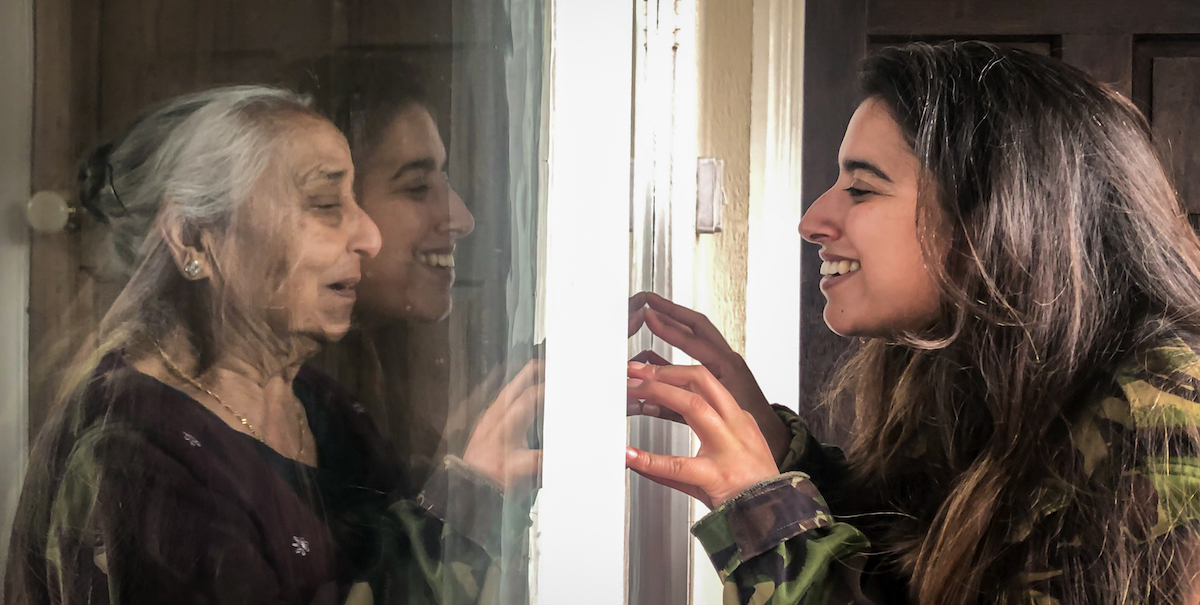It’s such a simple motif – a woman at or by a window – yet, as curator Jennifer Sliwka ably demonstrates in this show, is one that contains hidden depths. This exhibition concisely and clearly maps out the history of this motif, shows us several specific foci of its use over the centuries, while also exploring the extent to which this has been a motif of male artists reflecting the male gaze, before then highlighting ways in which female artists have subverted, used and critiqued the motif.
It is a significant achievement on Sliwka’s part to navigate across so much contested ground with such care and consideration, while delivering an exhibition that never fails to engage visually as well as intellectually. Alongside her consideration of the ‘woman in the window’ motif are also reflections on the nature of windows; not simply openings in walls but, as Sliwka notes, charged thresholds, sites of observation or communication, and signifiers of wealth or spiritual meaning. The layers of meaning explored in this exhibition are, as a result, significant and deep.

The exhibition identifies the key geographic locations, cultures and time periods for which the motif had a particular meaning and what this reveals about issues of gender and visibility. As such, it is instructive to view the exhibition alongside Feminine power: the divine to the demonic at The British Museum, which explores the representation of feminine power or desire in material form. In both, no simple answers are proffered to the issues raised but there is a wealth of imagery and ideas shared with which to engage.
The exhibition begins with the early history of the ‘woman in the window’ motif and its use in representations of power, seduction, spirituality and the afterlife. The earliest evidence for a window with a view – the so-called ‘Ramp House’ fresco fragments from Mycenae – are also the first instance of the ‘woman in the window’ motif. Here, a Phoenician carved ivory panel from the 10th century BCE, on loan from The British Museum and designed to adorn a window frame or piece of furniture, demonstrates the central issue, being “intended as a reflection of the power, control, wealth and far reach of the male” whose palatial furniture this woman was meant to adorn.
The exhibition then explores the motif in Medieval depictions of saints, Renaissance poetry and portraiture, and art of the Dutch Golden Age. Contrasts are made between the Catholic Church “which promoted the devout gaze and condemned the earthly one” – as with the emotive limestone sculpture of Saint Avia behind prison bars, intended to serve “as a powerful agent of prayer and petition” – and the Picture Gallery’s own Girl at a Window by Rembrandt, the initial point of inspiration for the exhibition, when Protestants had “few objections to looking out onto the spaces of everyday life.” Later works, such as Tom Hunter’s Woman Reading a Possession Order, reveal the lasting influence of such compositions and how they have been reimagined to convey different ideas, being based on Johannes Vermeer’s Girl Reading a Letter at an Open Window.
As the exhibition enters the modern period it shifts onto a thematic track by considering the personal relationships between artists and their models and muses through works by Walter Sickert, Pablo Picasso and Wolfgang Tillmans, portrayals of women enclosed within the domestic interior as in Isabel Codrington’s The Kitchen, and abstracted or fragmented representations of woman that remove a sense of particularity or personality as in Howard Hodgkin’s Girl by a Window.
The problematic nature of the male gaze – with its associated notions of spectatorship, desire and display – is then challenged by works such as Marina Abramović’s Role Exchange and Cindy Sherman’s Untitled Film Still #15 in which both artists place themselves in the role of the woman at the window. By documenting her exchange of roles with Suze, a sex worker in Amsterdam, Abramović explores what it means to become a sexual commodity, while Sherman considers stereotypes of female representation in popular culture, such as the “feminine characters presented in publicity stills for films from the 1940s and 1950s,” through the process of transforming into one herself.

As the exhibition progresses, its focus turns primarily towards women artists who have adopted the concept of the window as a site of communication, connection and inspiration. Louise Bourgeois, while confined to her house, salvaged a window frame to create My Blue Sky, representing a lifeline to the outside world. Rachel Whiteread’s sculpture Untitled (for WHP) made for her own home, offers a new interpretation of the motif by making “the beholder conscious of the space and architecture around them” and the ways these ’frame’ “a particular view onto the world.” Isa Genzken titled a mid-career survey exhibition as Everyone Needs At Least One Window, a sentiment that this exhibition fully endorses. Her Fenster sculpture “invites viewers to experience what it feels like to be both the subject and object of a window gaze.”
That experience was very much our experience during the national lockdowns caused by the Covid-19 pandemic and the exhibition concludes with photographs created at that time which poignantly show women and children in the place of observer and observed at one and the same time. These images recognise the new meaning that the notion of a ‘woman in the window’ acquired in the context of the global pandemic.
As Sliwka has said, this show provides insights into “the ways artists have taken up the device of the window as a kind of ‘portal’ between two realms: the real and the imagined, the sacred and the profane, between this life and the afterlife or between the public and the private.” As Jennifer Scott, the Sackler Director of Dulwich Picture Gallery, predicted, it provides “a revelatory experience” for visitors.
Words: Revd Jonathan Evens Top Photo Detail: Simran Janjua,Dadi’s Love, 2020, photograph Simran Janjua
Reframed: The Woman in the Window, Dulwich Picture Gallery, 4 May – 4 September 2022.

